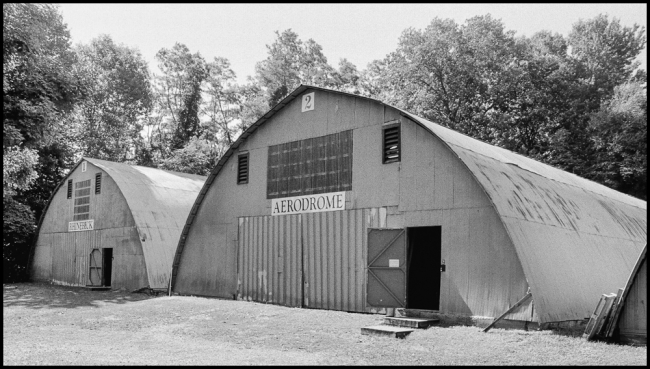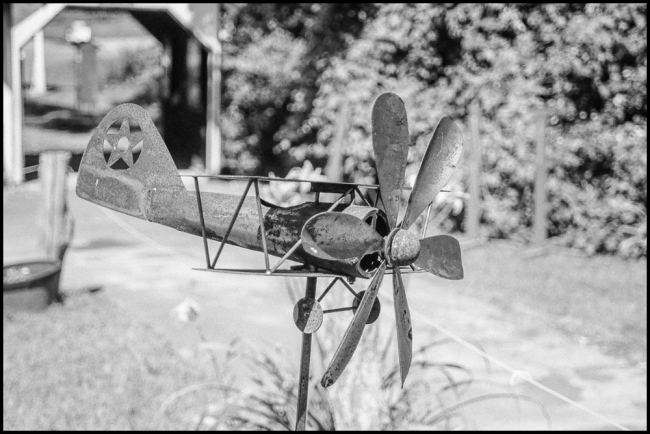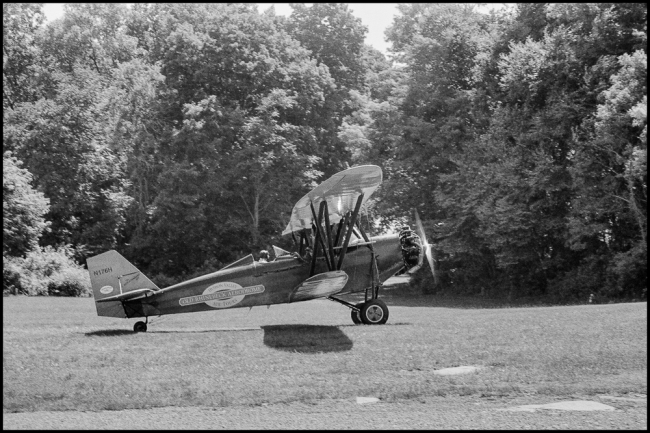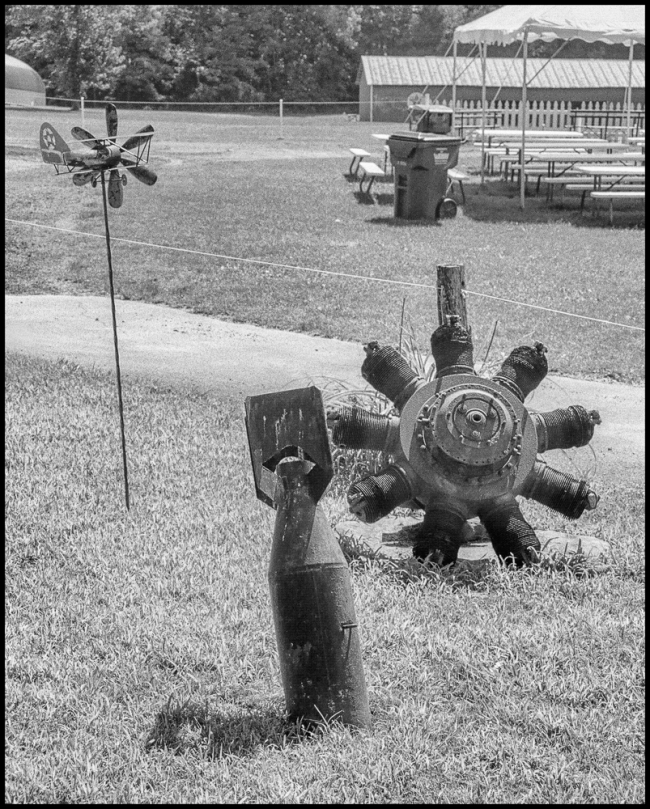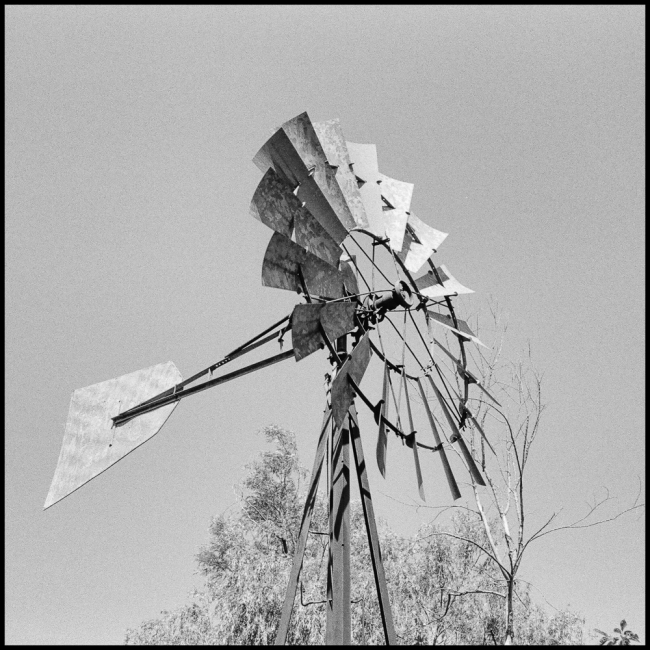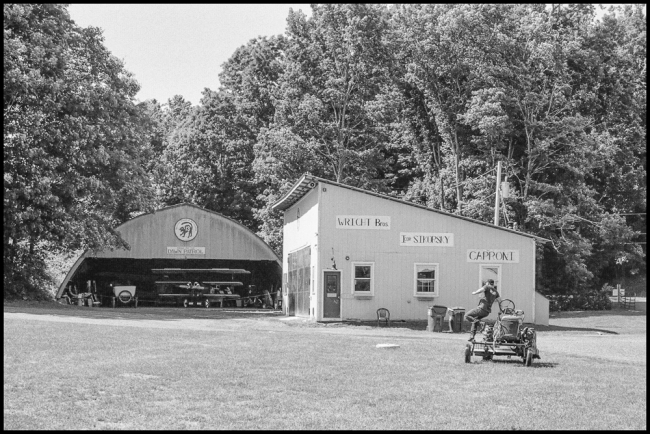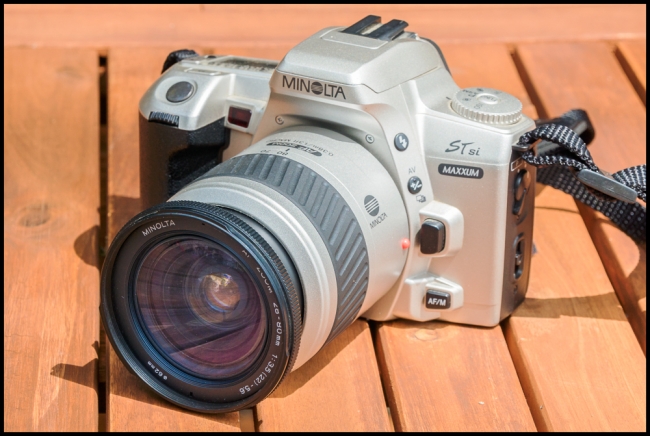The pictures were taken at the Old Rhinebeck Aerodrome. Above two of the three hangers, which, in addition to the main display area, contain the collection of vintage aircraft. The bulk of the collection shares a building with the gift shop. These are two of three other hangers. The first contains aircraft from the the Pioneer Era (1900-1913). The second features aircraft from World War I (1914-1918); and the third (not shown) displays aircraft from the Golden Age (1919-1940).
For the purpose of trying out this camera I chose the Minolta AF 28-80mm f3.5-5.6. Before when I’ve done such ‘try outs’ I’ve mostly (but not always) used whatever film I happen to have lying around – generally some kind of inexpensive print film. If after use I’ve felt that the pictures would look better in black and white I’ve converted them. However, this time I decided to use a black and white print film – specifically Kodak Tri-X.
The first thing I noticed was that when I looked through the viewfinder the image was not as bright as I expected. In fact it looked tinted. Was there a filter on the lens – no. I’m at a loss as to why it looked like this, but it didn’t seem to have any impact on the results. Would I have noticed something if I’d used color film? (Update: I just tried the lens on my Sony A77II and the colors looked fine).
Otherwise the camera was easy to use. Because it’s small and light it was easy to carry around. In poorer light the AF could ‘hunt’ a bit, but nothing too bad. Generally the camera found and confirmed autofocus pretty quickly.
When I got the negatives/scans back I noticed that they were all very contrasty, but nothing I couldn’t tame in lightroom. Was this because it was a bright, sunny day and there were quite strong contrasts? Was it because Tri-X is by its nature quite contrasty? Could it have had something to do with the tint I was seeing through the viewfinder?
I found the camera pleasant to use and not once did I think “Oh how I wish that I had this feature or that feature that my more fully featured cameras have but this one doesn’t”. It may be an entry level camera, but it seemed to have everything I needed.
Aircraft mobile.
Since the airshows are on weekends I didn’t expect to see anything flying…until I heard the sound of this New Standard D-25 warming up. Here it is starting to taxi.
Bits and bombs.
Windmill.
Man descending from a tractor with the Red Baron’s Fokker Tri-plane in the background.
See also the following posts taken with the same camera/lens/film combination:

